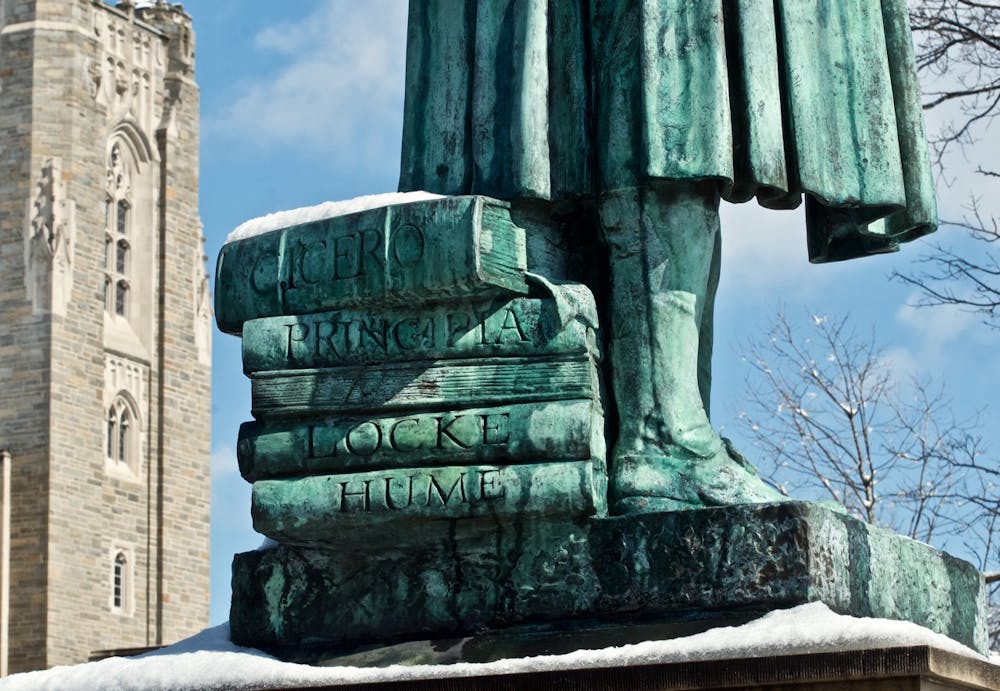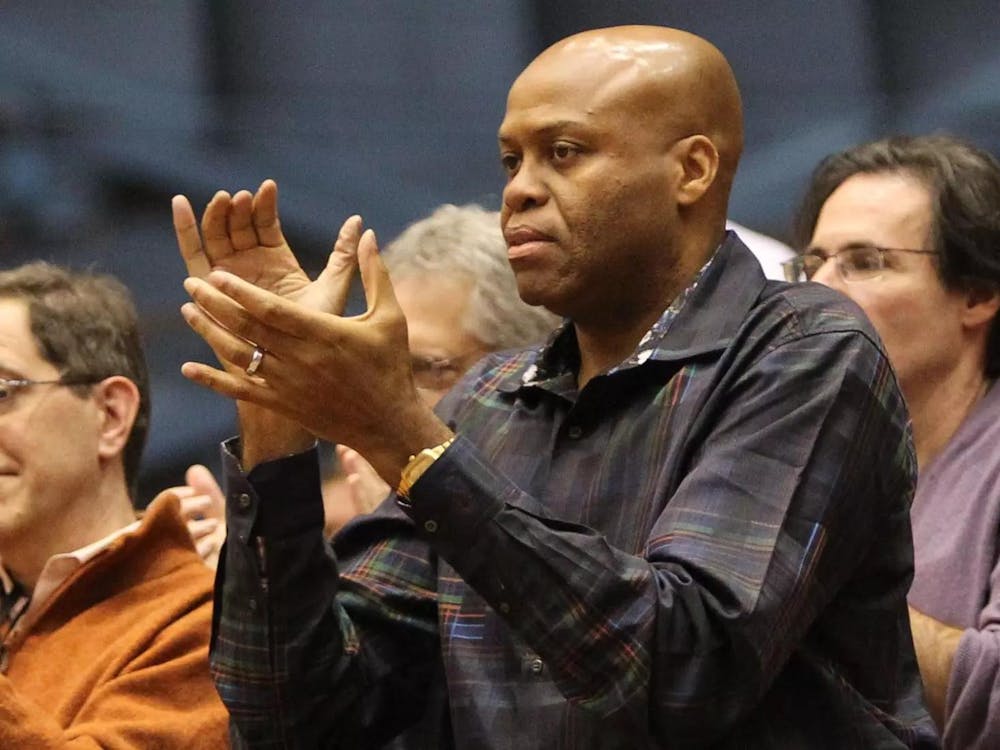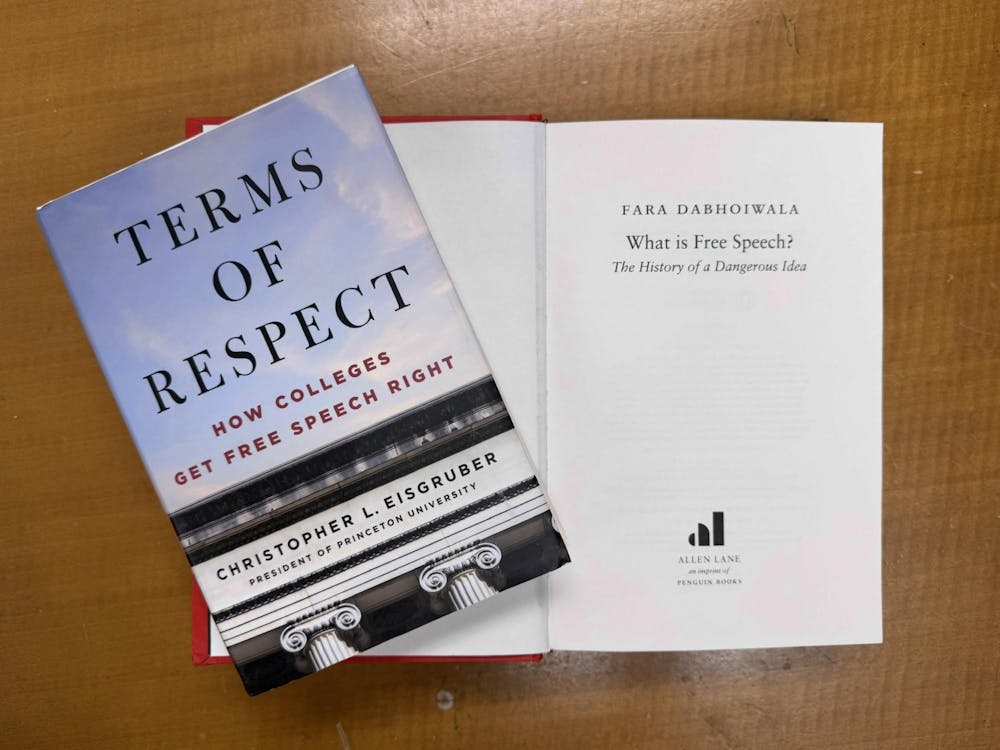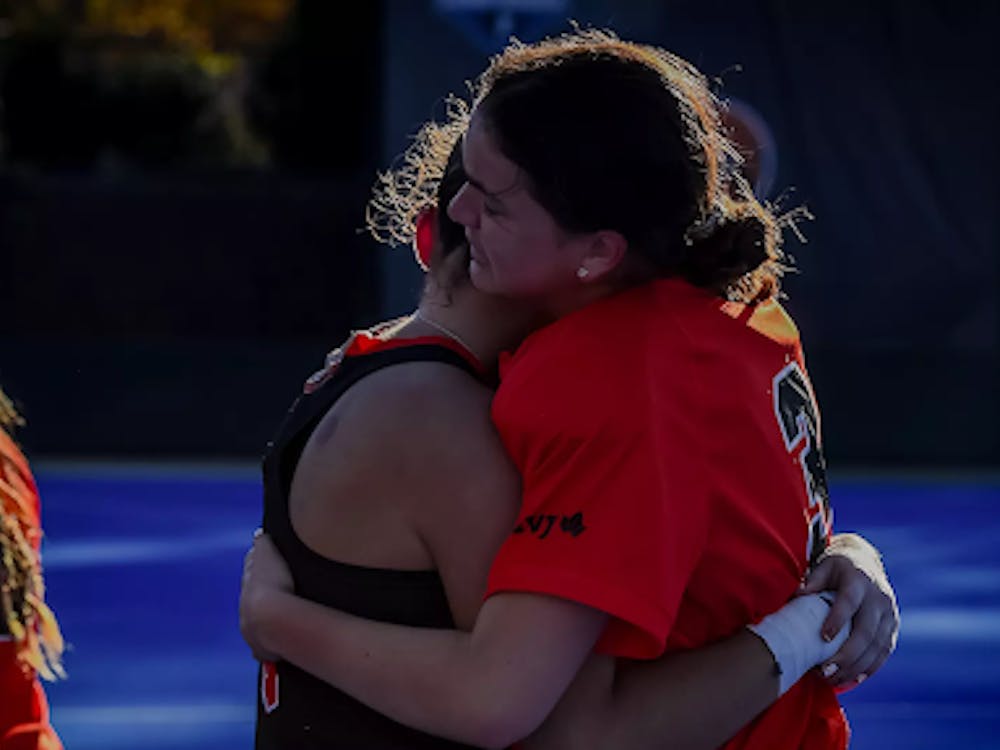On Aug. 11, the Princeton Public Schools (PPS) Board of Education unanimously voted to change the name of John Witherspoon Middle School, removing reference to the slave-owning former University president and signatory of the Declaration of Independence.
PPS interim superintendent Barry Galasso will assemble a committee comprising Princeton-area students, staff, parents, and alumni to decide on a new permanent name by June 30, 2021. In the meantime, the middle school will adopt the temporary name “Princeton Unified Middle School” (PUMS).
Though the idea of changing the school’s name has been floated in board meetings for years, a petition begun by Princeton High School alumnus Geoffrey Allen precipitated the decision. In the aftermath of George Floyd’s killing and the University’s decision to remove Woodrow Wilson’s name from the public policy school and residential college, Allen and several peers called for the middle school to change its name.
Their petition — which has garnered 1,558 signatures — reads, “In the midst of the ongoing support of the Black Lives Matter movement, this has created the opportune moment for John Witherspoon Middle School to rid itself of its slave-owning and anti-abolitionist namesake … This change is imperative, as the school’s name and Witherspoon’s legacy creates a hostile environment for both the middle school and district’s racially diverse student body.”
A full letter to the Board, which includes alumni testimony, outlines the reasons for the Witherspoon name removal, citing the Princeton & Slavery Project. Witherspoon, the University’s sixth president (1768–94), owned slaves, as did his children. In 1790, Witherspoon and the majority of a New Jersey Board voted against helping to abolish slavery, believing it was “already dying out.” Slavery in New Jersey, however, continued until the end of the Civil War.
Witherspoon’s legacy has also sparked debate at the institution over which he once presided. An early-July open letter signed by over 350 University faculty members called on Nassau Hall to remove a campus statue of Witherspoon. When asked about the letter then, University Spokesperson Ben Chang said the administration was “currently reviewing these and other suggestions for change that have been made by members of our community” as part of a process laid out in June.
In a controversial response, classics professor Joshua Katz wrote, “Since I don’t care for this statue or its placement in front of the building in which I have my office, I would not be sad if it were moved away—but emphatically not because of Witherspoon, a signer of the Declaration of Independence who was a major figure in Princeton and American history with a complex relationship to slavery.”
Chair and Christopher Binyon Sarofim ’86 Professor in American Art Rachael Z. DeLue — who signed the faculty letter — expanded on Witherspoon’s complicated history with race in an interview with The Daily Princetonian.
“It’s not that John Witherspoon was a man of his time and didn’t know that slavery was bad and therefore we ought to excuse his behavior,” she said. “He knew slavery was wrong. He preached against it. He wrote against the idea of enslaving humans, yet he still owned slaves, and his farm was labored by slaves, and all of his children had slaves.”
While acknowledging that Witherspoon played a major role in developing the town and University during the American Revolution and that he helped to educate emancipated Black men, DeLue — whose son is a seventh grade student at PUMS — believes that changing the name is important in making the middle school more inclusive. She said that her experience going to Harriet Tubman Middle School in Oregon affected how she saw the world.
“Names are important,” DeLue said. “And especially if it’s the name of a school that our children attend, because every time a student walks by that phrase ‘John Witherspoon Middle School,’ what they’re doing is confronting a symbol of authority. And if authority is associated with a figure like John Witherspoon, who made decisions in the past that he shouldn’t have made, including decisions about not abolishing slavery in New Jersey, then they’re associating authority with an anti-abolitionist and a slaveholder.”
The letter from PHS alumni suggested two names to replace Witherspoon’s: actor and activist Paul Robeson, who was born in Princeton, and freed slave Silvia DuBois, who lived in Princeton.

The process for the name change started when the board’s July 23 policy committee meeting was changed into a public hearing on the issue. Because community members complained that the time was not convenient, the committee held another hearing on Aug. 10.
At the hearings, community members in attendance showed overwhelming support for the name change. Board Vice President Michele Tuck-Ponder, however, acknowledged community members opposed to the decision for various reasons, and said that some were hesitant to discuss race.
“I think that the people who are very committed to and enthusiastic about the name change, we hear from them,” she said. “And I think that people who may be ambivalent or opposed to it, we hear less from them.”
For example, some people resisted removing the name because it originated with the Witherspoon Street School for Colored Children, which educated Black Princetonians from 1858 until local schools were integrated in 1948. Some Black residents have said their experience at the school was far better than that of students who attended integrated schools in Princeton, and they accordingly wished to keep the name.
Nonetheless, community members expressed excitement in the possibility of choosing a new name.
“People got very enthusiastic and excited around the idea of … affirmatively choosing a name for the building that reflects the mission and values of the district today, and not necessarily making a value judgement about what the choices were made in the past to put names on the building,” said Board President Beth Behrend.
Behrend appreciated residents’ readiness to reflect on their community’s values.
“As a board, we can’t run the schools, but we can encourage the community to have really positive dialogue about some of these harder issues and do it in a way that people feel welcome and people feel heard,” she said.
The alumni and school board, however, will not stop at changing the name of the middle school. The alumni letter to the board requested a more comprehensive social studies curriculum that addresses race.
“It should be just as important as learning about George Washington crossing the Delaware,” Allen said. The alumni suggested a “History of Princeton” class.
The board also plans to expand the high school’s current racial literacy courses to younger grades and an online platform. “I really don’t care what you call the school, because what’s important is what happens in the school,” Tuck-Ponder said.
The board’s equity committee made a list of action items in 2018, including hiring diversity and cultural competency training.
Allen, class of 2019, said he had a fairly positive experience at Princeton High School after moving to Princeton before ninth grade, but never talked about race much with peers. He said other minority students had shared traumatizing experiences with him. Recently, Princeton High School students came under fire for using the n-word in a video online, with parents and students criticizing PHS for their lack of disciplinary action.
Behrend conceded that the district has a lot of work to do in addressing racial inequality.
“Many people have had very good intentions for a long time, and they still haven’t succeeded,” Behrend said. “So I’m hoping that we’re going to move the needle on that, because it really does need to change.”
This urgency to address racial bias is reflected on the University’s campus — with faculty members, policy school students, and activists petitioning for change. Senior administrative leaders have also been tasked to develop “actions that can be taken in their areas of responsibility to confront racism.”
While much of the faculty letter focused on substantive change — including calls for more diverse hiring, minority representation among key decision making committees, and the convening of a group to investigate and discipline racist behaviors, incidents, and publication — the over 350 signatories also pointed to iconography and Witherspoon’s legacy.
They demanded that the University “[c]ommit fully to anti-racist campus iconography, beginning with the removal of the John Witherspoon statue (erected in 2001) near Firestone Library.”
Though she does not want it to be destroyed, DeLue believes that the statue is particularly problematic because of its recency. In 2001, she believes, the University was reckless in installing a statue of a slaveholder, especially because the installation’s plaque does not acknowledge his relationship with slavery.
“I don’t think that there was any thought at all about who this guy was save for the fact that he was Princeton’s sixth president, and he was a signer of the Declaration of Independence, and he saw Princeton through the revolutionary war,” she said.
DeLue hopes that the University acknowledges Witherspoon’s reality by adding another plaque with information about his history with slavery and moving the statue to a less conspicuous spot on campus.
“There needs to be a narrative that gives the full story,” she said — adding that removing the statue could open the public space for something “really interesting and creative and inclusive in terms of public art.”
But DeLue, who researches the history of American art, does not believe the statue must be destroyed, because it may be used to spur discussion if properly recontextualized. “We don’t eliminate and replace; we relocate and amplify,” she said.
She sees controversy around the Witherspoon statue as an opportunity for the community to reflect on its history.
“We all know that history is really complicated and tangled and strange and murky and weird,” she said. “But that doesn’t mean we, today, can’t make informed and critical decisions about how we treat that history, and I would love to see that happen with the statue on campus.”








